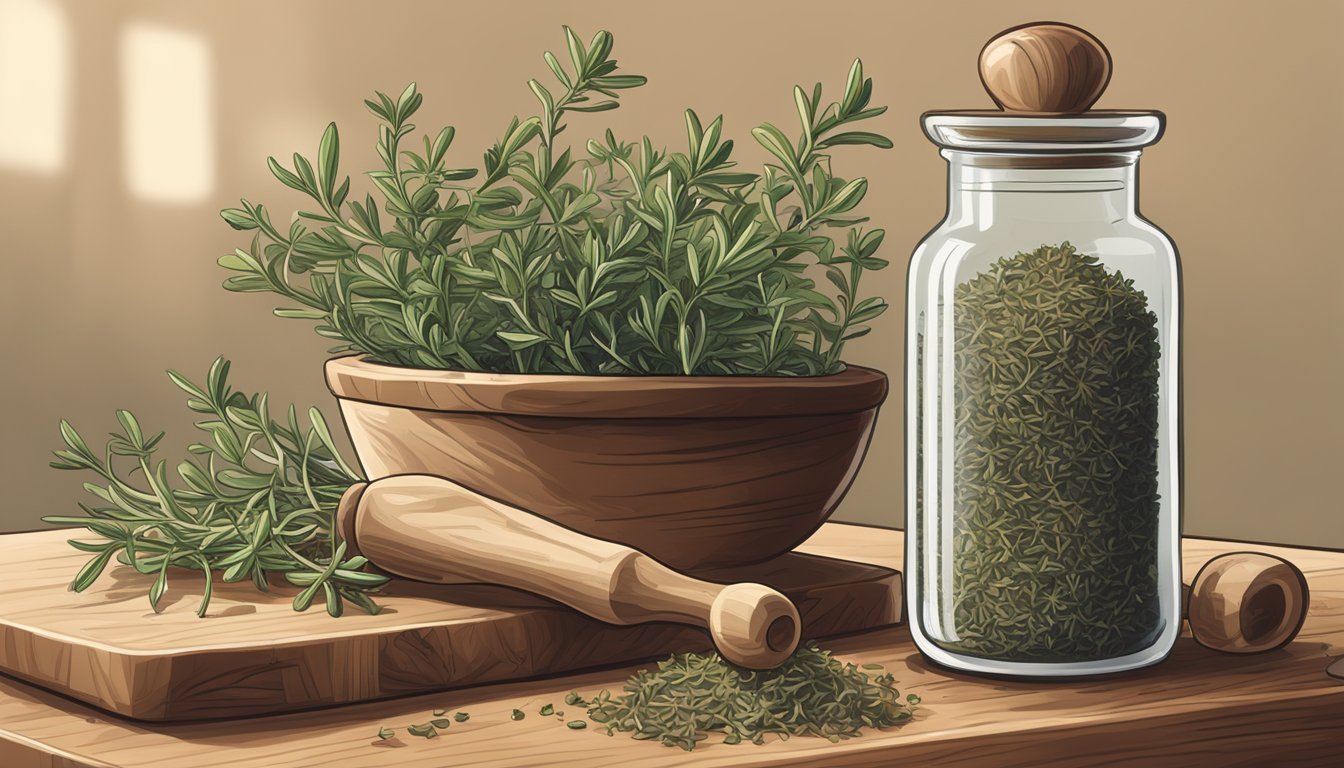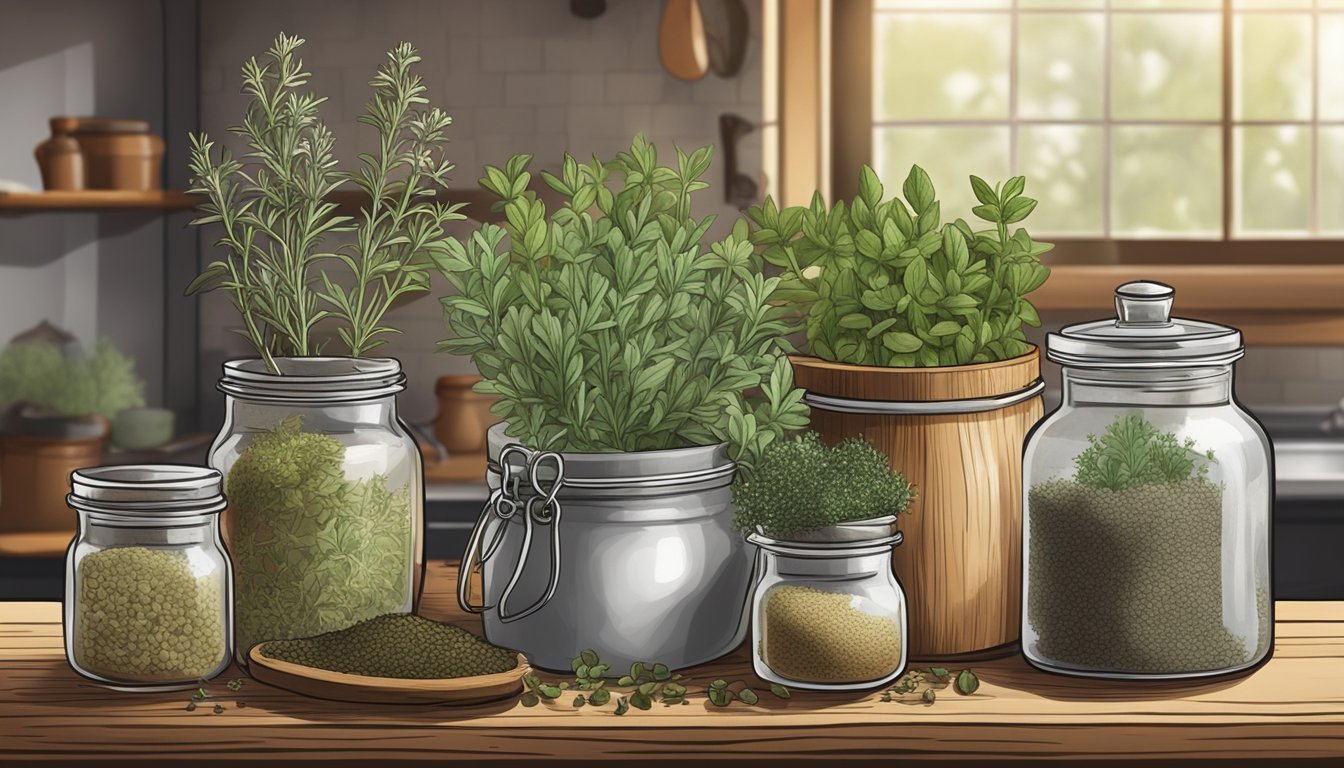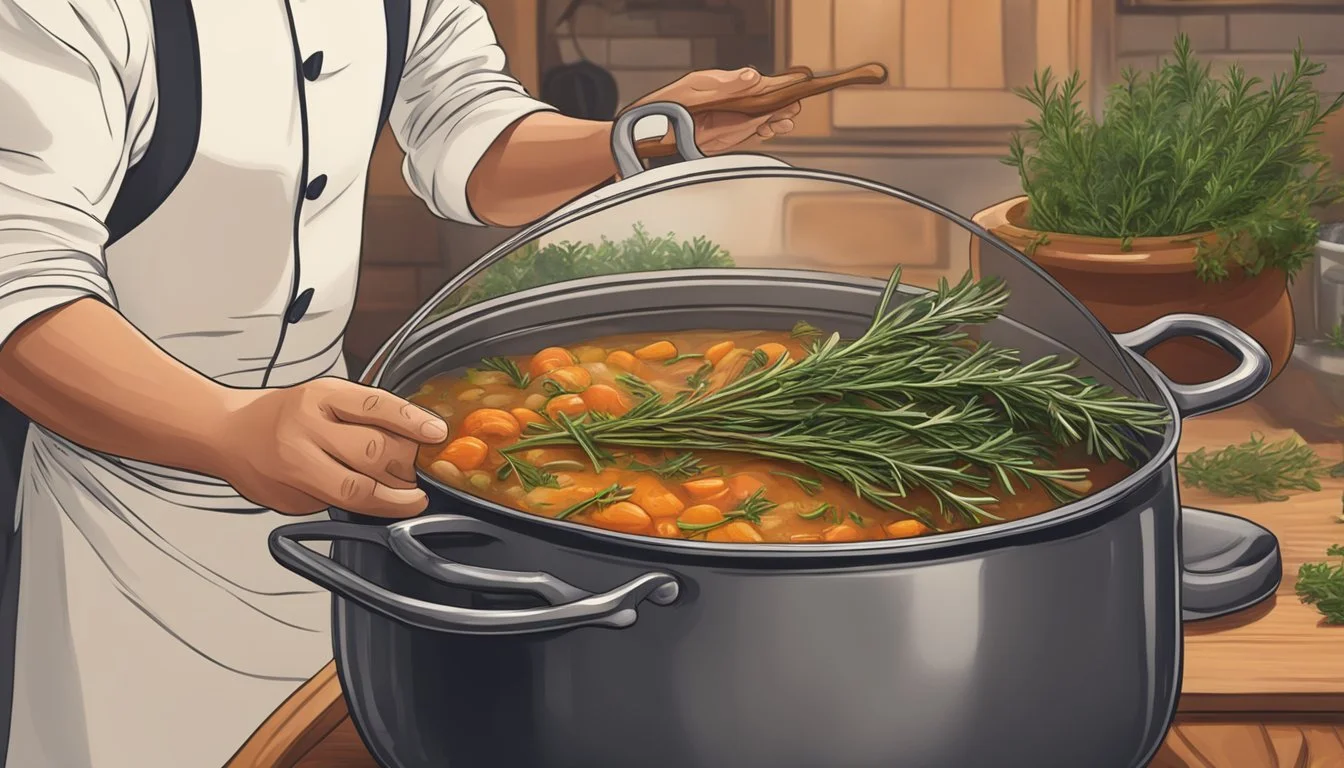Thyme Substitutes
Best Alternatives for Cooking and Baking
Cooking often demands specific flavors that certain herbs provide. Thyme, known for its earthy and slightly minty taste, is a popular herb used in a variety of dishes. Whether you're out of thyme or simply looking to experiment with other herbs, there are plenty of excellent substitutes available.
Oregano serves as a fantastic replacement for thyme because they share a similar robust, minty flavor. Both can be used fresh or dried in equal measures, ensuring that the integrity of your recipe remains intact. Marjoram, another member of the mint family, also offers a comparable flavor and can be substituted in a 1:1 ratio.
Other viable options include basil and rosemary. Fresh basil adds a bright, slightly sweet touch, while rosemary provides a stronger, pine-like flavor. Using these herbs can not only replace thyme effectively but also introduce new and exciting dynamics to your culinary creations.
Understanding Thyme
Thyme, a staple herb originating from the Mediterranean, is known for its earthy flavor, versatility in culinary applications, and notable health benefits. The essential oil thymol present in thyme is also recognized for its antimicrobial properties.
Culinary Uses of Thyme
Thyme is widely used in cooking, bringing an earthy and slightly minty flavor to a variety of dishes. It complements meats, especially poultry and lamb, and is often included in stews, soups, and sauces.
This herb pairs well with other Mediterranean herbs like rosemary, oregano, and basil. In addition, dried thyme is commonly found in seasoning blends such as Herbes de Provence and poultry seasoning, making it a versatile addition to spice racks.
Distinct Flavor Profile of Thyme
The flavor of thyme is distinct, combining earthy, minty, and slightly lemony notes. This complex profile is due to its essential oil, thymol, which contributes significantly to its aromatic and flavor properties.
Thyme's subtle yet robust flavor enhances the depth of dishes without overwhelming them. It is used in both its fresh and dried forms, with fresh thyme offering a slightly milder taste than dried.
Health Benefits of Thyme
Thyme offers several health benefits, primarily due to its essential oil, thymol. Thymol has antimicrobial properties, making thyme beneficial for immune support and fighting infections.
It is also rich in vitamins A and C, antioxidants, and minerals like iron and manganese. These nutrients contribute to its anti-inflammatory, respiratory, and digestive health benefits, making thyme a valued herb in both culinary and medicinal contexts.
Best Thyme Substitutes
When thyme is unavailable, other herbs can provide similar flavors and enhance your dishes. Various Mediterranean herbs, savory seasonings, and classic herb blends can serve as effective substitutes in a range of recipes.
Mediterranean Herbs as Substitutes
Oregano and marjoram are popular Mediterranean herbs that can substitute for thyme. Oregano has a robust and slightly peppery flavor, making it suitable for hearty dishes like stews and roasts. Use oregano at a 1:1 ratio as a thyme substitute.
Marjoram, with its sweeter and milder profile, offers a closer match to thyme. A 1:1 substitution ratio is also recommended for marjoram. Combining marjoram with parsley can further emulate thyme's flavor, balanced between sweet and slightly bitter notes, making it ideal for soups and sauces.
Rosemary and sage are also potent options. Rosemary’s piney and aromatic qualities work well in roasted dishes, while sage, with its earthy and slightly peppery taste, complements stuffing and sausages. Due to their strong flavors, use these herbs sparingly.
Savory Substitutes
Various savory herbs and spice blends can stand in for thyme. Savory itself, especially summer savory, has a peppery and thyme-like taste. It works wonderfully in bean dishes, stews, and sausages. Use savory in a 1:1 ratio when substituting for thyme.
Italian seasoning, a blend of several herbs including oregano, basil, rosemary, and thyme, can serve as a versatile substitute. This mix provides a well-rounded flavor profile suitable for a range of Italian and Mediterranean dishes. Use it at a 1:1 ratio.
Poultry seasoning is another mix that often includes thyme along with sage, marjoram, and other herbs. It fits seamlessly into stuffing, roasted poultry, and savory vegetable dishes. Adjust the quantity based on taste preference as it's typically potent.
Herbes de Provence and Bouquet Garni
Herbes de Provence is a traditional mix that usually includes thyme, rosemary, marjoram, and savory, among other herbs. This blend is perfect for grilled meats, stews, and vegetable dishes, providing a complex herbal bouquet. Use it in a 1:1 ratio when replacing thyme.
Bouquet garni is a bundle of herbs tied together, often including thyme, parsley, and bay leaves. It is primarily used to flavor soups, stocks, and stews. Replace thyme with a bouquet garni to impart a rich and layered herbal infusion. Adjust according to the recipe requirements.
These herb blends not only replace thyme but also enrich dishes with diverse flavors. Use them thoughtfully to achieve the desired taste without overpowering the dish.
Substitutes for Specific Dishes
Choosing the right substitute for thyme largely depends on the dish you are preparing. Different herbs can enhance the flavors of poultry, meats, soups, stews, vegetarian dishes, and even baked goods.
Substitutes in Poultry and Meats
For poultry and meats, such as roast chicken or turkey, poultry seasoning and tarragon are excellent substitutes. Poultry seasoning often includes a blend of sage, rosemary, and marjoram, which complement chicken well. Tarragon offers an aromatic anise-like flavor that pairs beautifully with meats like steak or roast chicken. Marjoram can also be used here; it has a sweet, mild flavor similar to thyme, making it suitable for stuffing and roasted meats.
Substitutes in Soups and Stews
In soups and stews, oregano and marjoram work well as thyme substitutes. Oregano, part of the mint family like thyme, brings a robust and slightly spicy flavor. Marjoram offers a gentler touch but still delivers on the herbaceous notes. For beef stews, parsley and tarragon can be combined to mimic the depth that thyme adds. Use fresh herbs if possible to capitalize on their full flavor profile.
Substitutes in Vegetarian Dishes
For vegetable dishes, soups, and salads, parsley and basil can stand in for thyme. Parsley is versatile and offers a fresh, slightly peppery taste. It works well in vegetable dishes and leafy green salads. Basil, on the other hand, brings a bright and somewhat sweet flavor that can uplift Mediterranean-style dishes and tomato-based recipes. Combining herbs like parsley and marjoram can get even closer to thyme’s profile, enhancing vegetarian dishes.
Using Substitutes in Baked Goods
In baked goods, thyme is often used for savory bread and muffins. To replace thyme in these recipes, oregano and sage can be good alternatives. Oregano’s bold flavor works particularly well in bread, offering a slightly more intense taste. Sage provides a distinct earthy flavor, suitable for savory baked items like herbed bread or muffins. Basil can add an aromatic quality, creating a unique twist on traditional thyme-flavored baked goods.
Alternative Flavor Profiles
Many substitutes for thyme bring distinct flavors that can enhance various dishes. The different flavor profiles range from herbal blends like Herbes de Provence to minty and peppery options. Here are some of the best alternatives categorized by their unique taste characteristics.
Herbal Blends and Mixes
Herbal blends often contain a mix of ingredients that can replicate the complex flavor of thyme. Herbes de Provence, for example, includes savory, marjoram, rosemary, and lavender. This blend is particularly effective in Mediterranean dishes.
Za’atar is another effective substitute, combining thyme, sumac, and sesame seeds to offer an aromatic and slightly tangy flavor. This mix works well on roasted meats and vegetables.
Italian seasoning, with its combination of basil, oregano, rosemary, and thyme, provides a well-rounded herbal taste suitable for Italian cuisine.
Floral and Minty Substitutions
For a lighter and more fragrant alternative, consider using herbs with a floral or minty profile. Fresh parsley offers a mild flavor and can balance out stronger herbs when used in combination, such as with marjoram.
Shiso, a herb from Japanese cuisine, provides a unique blend of minty and citrusy notes and can be used in salads and seafood dishes.
Mint itself, with its fresh and cooling flavor, can stand in for thyme in dishes that benefit from a bright and refreshing taste.
Peppery and Bold Alternatives
Bolder options bring a distinct and robust taste to recipes. Sage has a strong, savory flavor that complements poultry and stuffing. Its earthy and slightly peppery notes make it a suitable replacement.
Oregano and rosemary both offer intense flavors that can stand up to hearty dishes like roasted meats and stews. Oregano has a peppery quality, while rosemary brings a pine-like aroma.
Sumac, often used in Middle Eastern cuisine, provides a bright, citrusy tang and adds a peppery element to various dishes. This spice can be particularly effective in salads and marinades.
Using Fresh Herbs vs. Dried Seasoning
When deciding between fresh herbs and dried seasoning, it is essential to understand how the differences in their form impact quantity and flavor intensity in your recipes.
Adjusting Quantities for Fresh Versus Dried
Fresh herbs, such as fresh thyme, are typically more delicate and contain more moisture than their dried counterparts. This means they offer a milder flavor. In contrast, dried thyme and other dried seasoning substitutes are more concentrated and potent.
A general rule is to use a 1:3 ratio when substituting dried herbs for fresh herbs. For instance, if a recipe requires 1 tablespoon of fresh thyme, use only 1 teaspoon of dried thyme.
Similarly, if substituting fresh herbs for dried ones, increase the amount to achieve the desired flavor. For example, use 3 teaspoons of fresh thyme for every 1 teaspoon of dried thyme specified in the recipe.
Preserving the Integrity of Flavors
The integrity of flavors can vary significantly between fresh herbs and dried seasoning substitutes. Fresh herbs, such as fresh thyme, impart a lively, vibrant flavor that can be more nuanced. They are best added towards the end of cooking or as a garnish to preserve their delicate nature.
Dried herbs, however, benefit from being added early in the cooking process. This allows them to rehydrate and fully release their concentrated flavors. Dried thyme can stand up to longer cooking times and is ideal for recipes that require simmering or baking.
Understanding how to properly integrate each type into your cooking process is key to preserving the intended flavor profile of your dishes.
Creative Uses for Thyme Substitutes
Thyme substitutes can offer more than just a replacement in recipes. They enable exciting culinary experiments in cocktails, spice blends, and infused oils and sauces. Each alternative herb brings its own unique twist.
Cocktail Innovations with Alternative Herbs
Craft cocktails often use herbs to add layers of flavor. Basil can replace thyme for a fresh, aromatic note. Muddle fresh basil with lemon juice to elevate a gin-based cocktail. Tarragon can add a touch of anise, perfect for vodka or gin infusions. Marjoram works well in whiskey sours, balancing the sourness with its sweet, mild flavor.
Crafting Unique Spice Blends
Altering spice blends with thyme alternatives offers new taste profiles. Italian seasoning can incorporate oregano for a slightly different but familiar taste. Herbes de Provence can be enhanced with savory or marjoram. Poultry seasoning benefits from the addition of sage or rosemary, ensuring a robust mix.
Infusing Substitutes in Oils and Sauces
Infusing oils and sauces with thyme substitutes enhances depth. Parsley adds a bright, grassy note when infused in olive oil. Basil makes a versatile pesto, perfect for pasta or meat dishes. Oregano can be used in marinades, imparting a full-bodied, earthy flavor to meats. Each substitute transforms the dish, providing a unique twist.
Pairing Substitutes with Foods
When substituting thyme in recipes, it's important to consider the flavors of the ingredients you're working with. Each substitute has its own characteristics that can enhance the dish in unique ways.
How to Choose Substitutes for Seafood
Seafood pairs well with herbs that add bright and delicate flavors. Dill is an excellent substitute for thyme in fish dishes due to its light and slightly tangy profile.
Tarragon can also be used, offering a mild anise flavor that complements the subtlety of seafood.
For richer dishes like clam chowder or seafood stews, herbes de Provence can add depth with its blend of thyme, rosemary, and other herbs.
Complementary Herbs for Vegetarian and Vegan Meals
Vegetarian and vegan meals benefit from herbs that enhance the natural flavors of veggies, mushrooms, and broths. Basil adds a fresh, vibrant taste and works well with tomatoes, potatoes, and mushrooms.
Use oregano to lend a robust, earthy flavor to vegetable stews, vegan pizzas, and stuffed bell peppers.
Marjoram is particularly effective in lighter veggie dishes or broths, offering a sweet, slightly floral note that's akin to mild thyme.
Enhancing Cheese and Dairy Dishes with Substitutes
Cheese and dairy-based dishes, such as quiches, creamy pastas, and cheese sauces, can be enhanced with herbs that complement the richness.
Chives offer a mild, onion-like flavor that pairs well with soft cheeses and cream-based sauces.
Parsley adds a fresh, slightly peppery note, making it a good choice for cheese spreads and salads.
For a deeper, more complex flavor, try sage in cheese-stuffed mushrooms or dairy-laden potato casseroles.
Herb Pairings for Sweet Dishes and Desserts
While thyme is rarely used in sweet dishes, its substitutes can add unique dimensions to desserts. Lavender, with its floral and slightly sweet profile, can be used in cakes, cookies, and custards.
Mint pairs well with fruits, especially in dishes like fruit salads or mint-infused chocolates.
Lemon verbena provides a citrusy flavor that enhances cakes, lemon bars, or even sweet berry compotes.
Cultivation and Storage Tips for Herbs
Proper cultivation and storage of herbs such as thyme and its substitutes ensures their strength and keeps their versatile flavors intact. Growing these herbs in your own garden allows for fresh harvests, while correct storage methods maintain their potency over time.
Growing Substitutes in Your Own Herb Garden
Herbs like oregano, rosemary, and others that serve as substitutes for thyme thrive well in conditions similar to those of the Mediterranean region. They require well-draining soil and plenty of sunlight.
When planting, space the herbs according to their specific needs, typically 12-18 inches apart for adequate airflow. Regular watering is crucial, but avoid waterlogging to prevent root rot.
Using mulch can help retain moisture and deter weeds. Regular pruning encourages bushier growth and more flavorful leaves.
Proper Storage for Freshness and Potency
For storing fresh herbs, basic steps can maximize their shelf life. Rinse herbs under cool water and pat them dry.
To store, wrap them in a slightly damp paper towel and place them in a resealable plastic bag, stored in the refrigerator. This method works well for rosemary and oregano.
If drying is preferred, bunch the herbs and hang them upside-down in a dry, well-ventilated area. Once dried, store them in airtight containers away from direct sunlight to preserve their aromatic oils.
Freezing herbs in oil or water using ice cube trays is another effective method, especially for preserving their strength and versatility in cooking.
Enhancing Traditional Recipes with Substitutes
Substituting thyme in traditional recipes can help maintain familiar flavors while introducing a new twist. This section will explore how to modify classic Italian dishes, enhance French cuisine with Herbs de Provence, and incorporate local herbs in ethnic cuisines.
Modifying Italian Seasonings in Classic Dishes
Italian cuisine often uses thyme in various recipes like pasta sauces and chicken dishes. Oregano can be a strong alternative, offering a similar earthy and robust flavor.
Pasta: Replace thyme with equal parts oregano to maintain the herbaceous profile.
Chicken Recipes: Use fresh oregano in marinades or sprinkled on top before roasting to enhance the flavor.
Basil is another excellent substitute, especially for fresh thyme. Basil’s bright and slightly sweet notes can add an interesting layer to dishes without overpowering them.
Integrating French Flavors with Herbs de Provence
In French cuisine, thyme plays a crucial role in stews, roasted meats, and vegetable dishes. Herbs de Provence—a blend that includes thyme alongside rosemary, marjoram, and lavender—can be a perfect substitute.
Beef Recipes: Incorporate Herbs de Provence in beef stews to achieve a balanced and aromatic dish.
Vegetables: Toss roasted vegetables with this herb blend to bring out a delicate earthiness.
Herbs de Provence can elevate traditional French recipes by adding depth and complexity while preserving the essence of thyme.
Incorporating Local Herbs in Ethnic Cuisines
Ethnic cuisines from around the world can benefit from local herbs that stand in for thyme. Parsley and marjoram are versatile and can suit various dishes from different cultures.
Mediterranean Recipes: Use parsley to replace thyme in salads, soups, and couscous dishes. Its fresh and slightly peppery taste complements these recipes well.
Fish and Seafood: Marjoram offers a subtle citrusy note that works wonderfully in seafood dishes, bringing out the natural flavors without overwhelming the dish.
Utilizing these local herbs not only preserves the integrity of ethnic recipes but also introduces regional twists that enhance the overall culinary experience.







